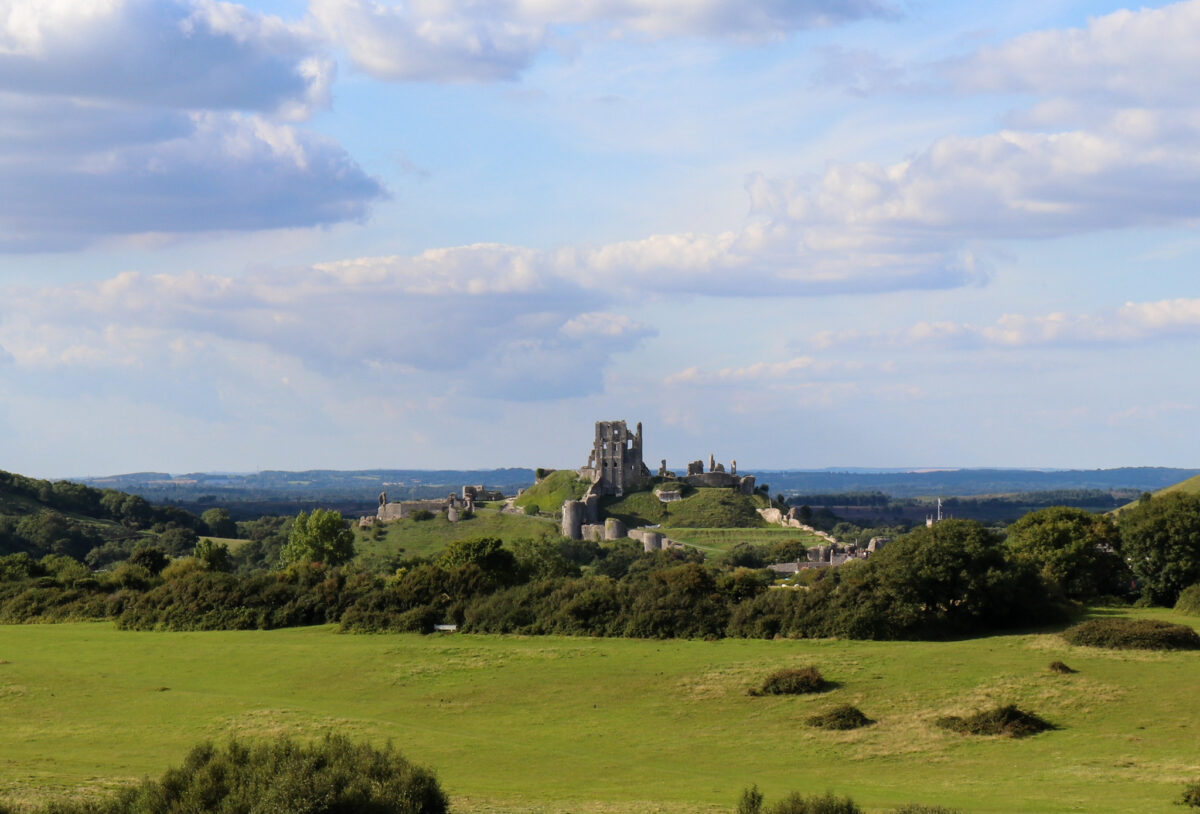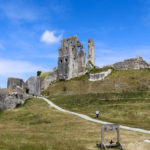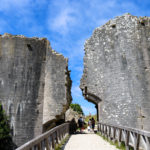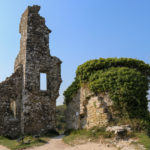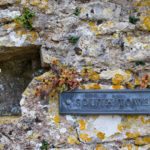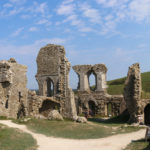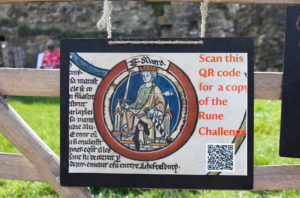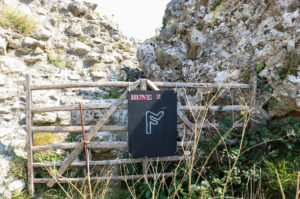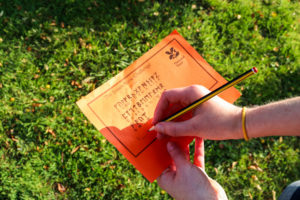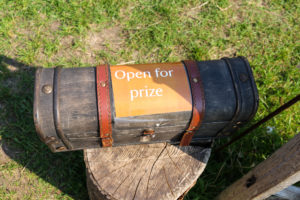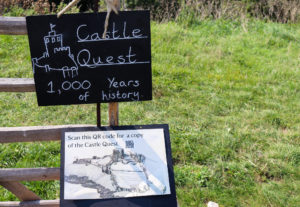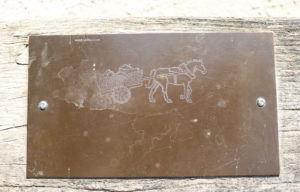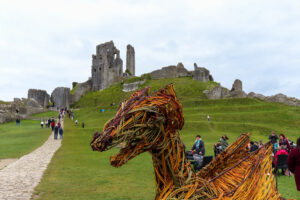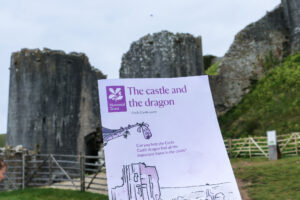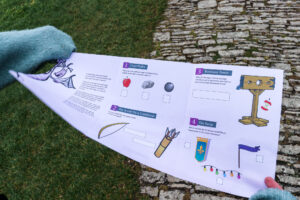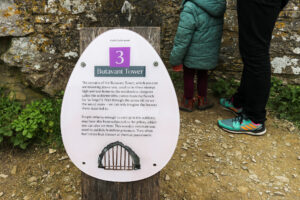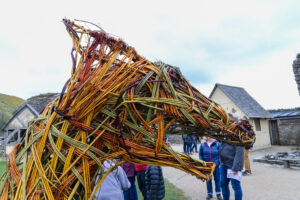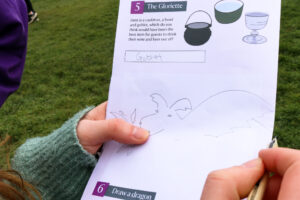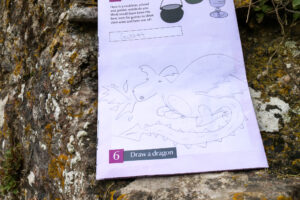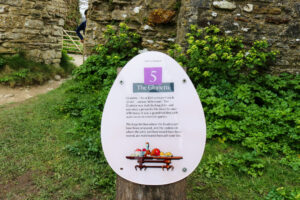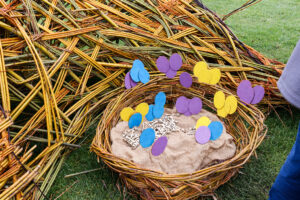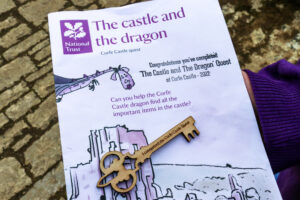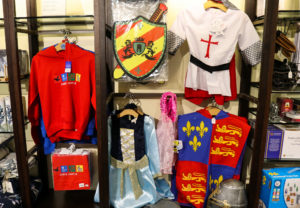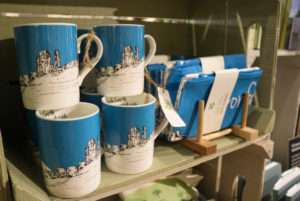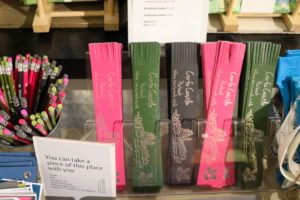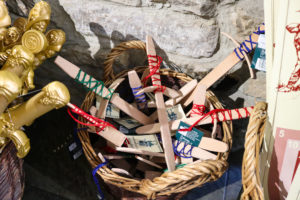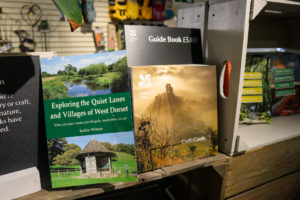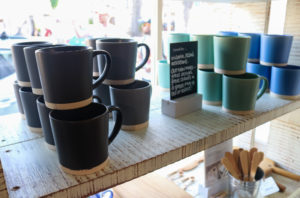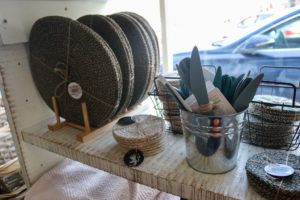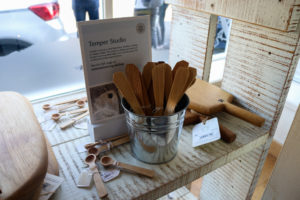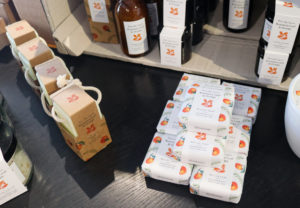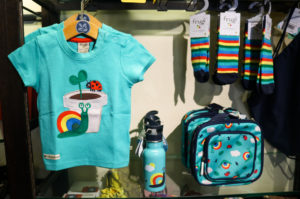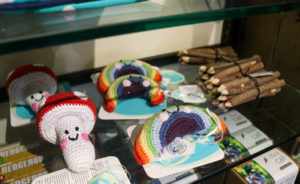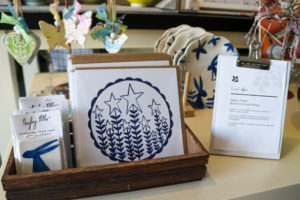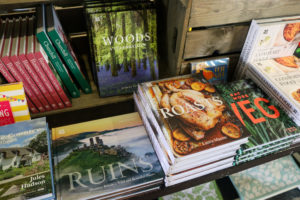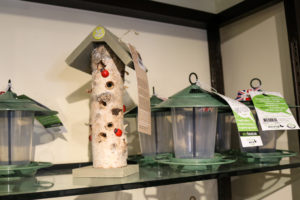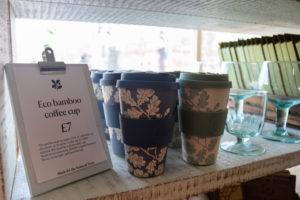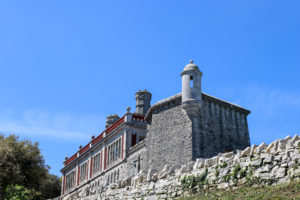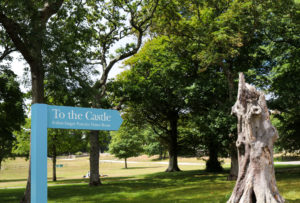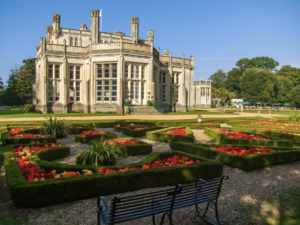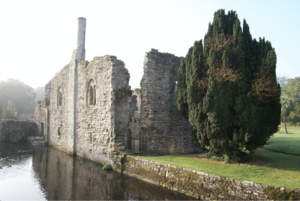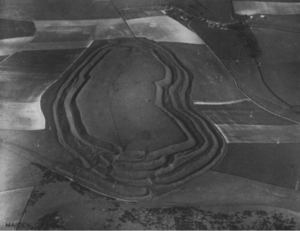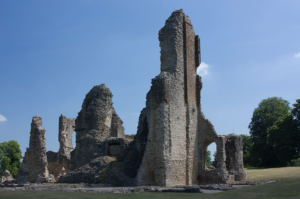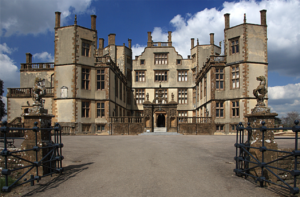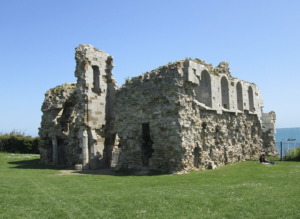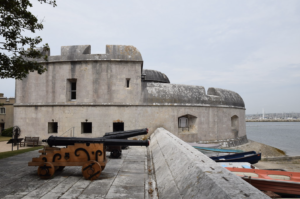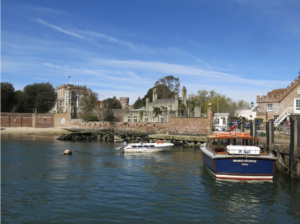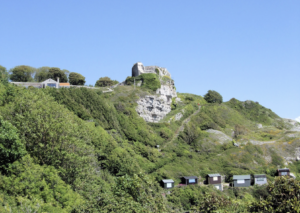Standing watch over the village of the same name, Corfe Castle is an iconic and striking ruin, synonymous with the Isle of Purbeck.
Explore the history hidden in the walls of this famous castle ruin that is over a thousand years old and has survived sieges, treachery and conspiracy.
Built on top of a natural mound, or ‘motte’, Corfe Castle would have been ideally situated to defend from all angles.
Its name is also believed to have been derived from the ’cutting’, or ‘gap’, between the two Purbeck hills where it is situated (which are also fantastic walking routes).
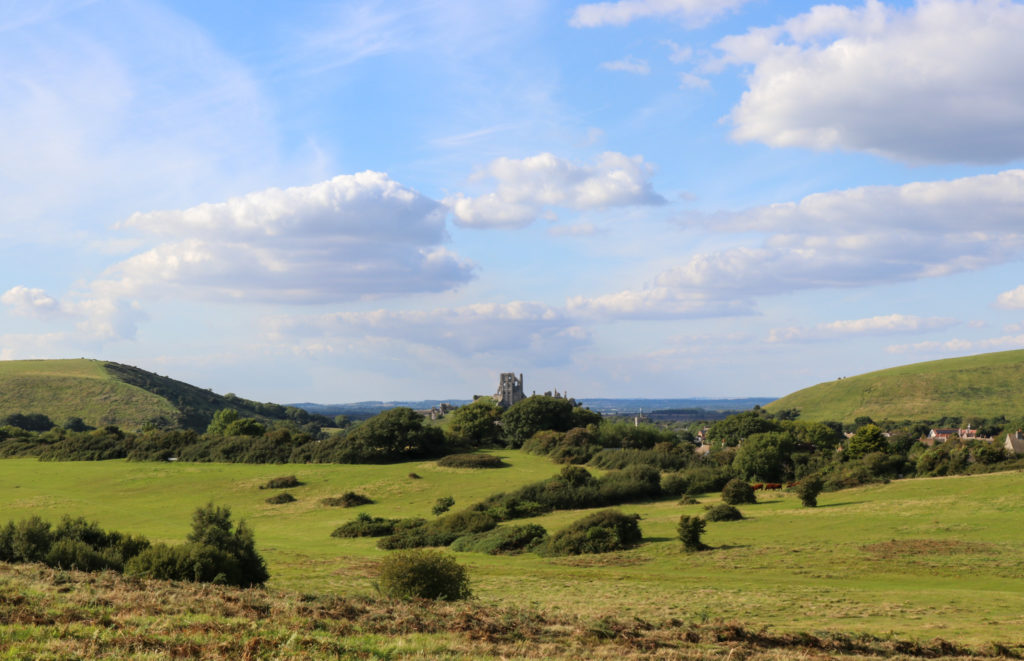
Today, you can soak up the stories of betrayal, battles and bargaining as you walk around the impressive Purbeck stone de
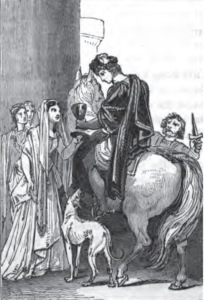
fences, gatehouses and baileys of the castle that was once home to royalty – as far back as King Alfred the Great’s time, when he defended the Kingdom of Wessex against the Vikings.
Learn how various future kings adapted and upgraded Corfe Castle to suit their defence (as well as interior design) requirements, and walk the path where the revered young King Edward the Martyr fled after being stabbed in the back by a servant on the order of his stepmother.
The church in the village is named after Edward, who later became a Saint and is associated with various miracles.
As you explore the castle grounds, be sure to listen to the incredible story of the formidable Lady Bankes – one of Corfe Castle’s private owners – at the audio story points dotted around the castle, which tell of her courage in defending Corfe against two sieges until she was brought down by a bitter betrayal from within her own walls.
You’ll discover how, in 1646 Corfe Castle was taken from Lady Bankes, and subsequently ordered by an Act of Parliament to be destroyed.
Corfe Castle entrance information
Opening times
The castle is open 10am – 6pm daily.
Last entrance is at 4pm
Admission
Ticket prices:
- Adults £10
- Children (over five) £5
- Family £25
- One adult + up to three children £15
Admission for National Trust members is free.
Dogs

Dogs are welcome in the castle on a short lead.
Note that the hill on which the castle stands is often used to graze sheep.
Check for dog-friendly events throughout the year – for example the May Fair and its fun dog show.
In case of nervous dogs, some events (such as historical reenactments) may occasionally have cannons sounding.
Facilities
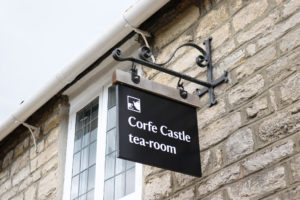 Refreshments
Refreshments
There is a National Trust tea room at the foot of the castle, as well as various dining options within Corfe Castle village itself.
For coffee and cake, try The Pink Goat or the model village.
For some traditional pub grub, The Greyhound, The Fox, The Bankes Arms and The Castle Inn are all nearby.
Public toilets
Public toilets, including adapted toilets and baby-changing facilities, can be found by the entrance to the castle.
Accessibility
The National Trust offers mobility parking and the main castle grounds are accessible, although there is a cobblestone walkway through the entrance.
Note that many parts of the castle itself include steep, hilly areas and steps.
Children and families at Corfe Castle
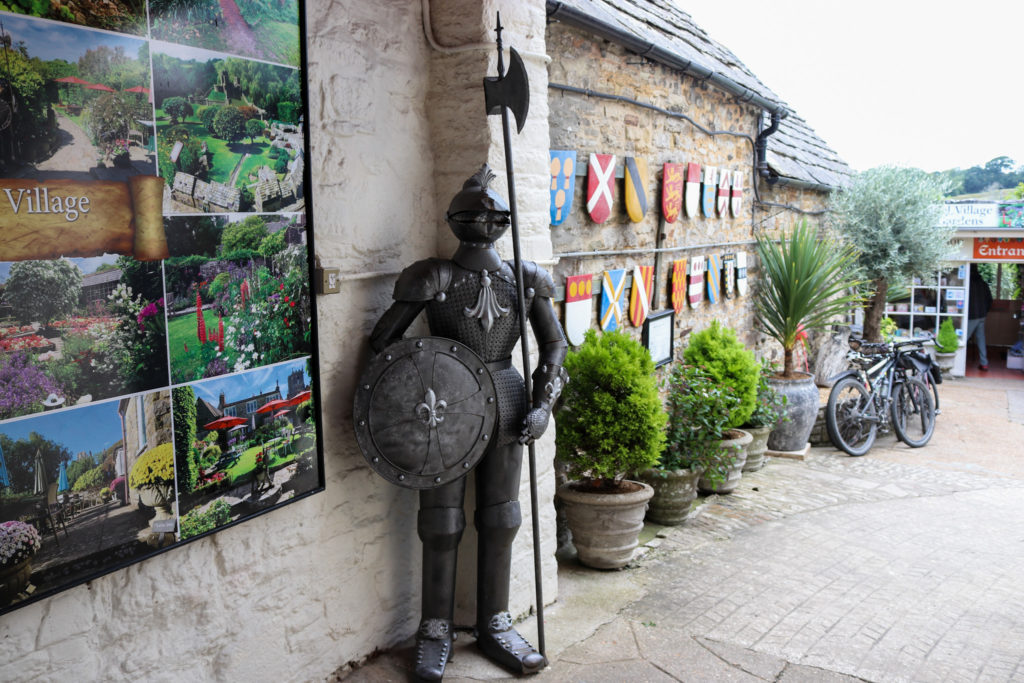
Children’s activities
There are plenty of year-round activities to help children explore Corfe Castle and learn about its history in a fun and interactive way.
There’s also a fantastic grassy hill in front of the castle for practising your roly poly-ing!
Learn all about the Saxons in Corfe
Easter Dragon Quest family trail
Can you help the forgetful dragon remember where she’s left her eggs? There are six to find hidden amongst the castle ruins.
Use the clues at each egg to work out a castle-based answer and head back to the friendly dragon to claim a prize from her nest of treasure.
Family events
Various events are held at the castle throughout the year, including:
- Viking and Saxon reenactments – A weekend of history brought to life. See the Siege of Wareham unfold in the castle grounds and explore the living history displays, including trying your hand at archery
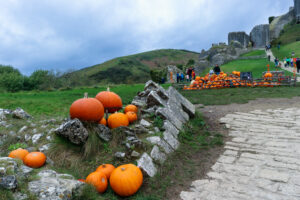
- Open-air cinema – As part of the annual Purbeck Film Festival, ‘Stars Under the Stars’ screenings are typically shown in the castle grounds over three days in August
- Open-air theatre – Live performances in the castle grounds by a variety of theatre groups. Past performances include a range of well-loved Shakespeare plays; Frankenstein; and Ali Baba and the Forty Thieves
- Easter fun – An egg-hunt with a difference. Explore the castle ruins to claim your egg or prize at the end
- Spooky fun at Halloween – Join in on a pumpkin-hunt, craft activities and teddy zip-wire
- Christmas carols in the castle – Complete with magical lanterns, string lights and burning braziers
- Traditional storytelling – With the mischievous Lord of Misrule. A medieval tradition of storytelling and games typically held in December
The National Trust asks that children are supervised at all times.
Gifts and souvenirs – take home a memento of your day
The National Trust shop sells a wealth of Corfe Castle-inspired gifts – from medieval fancy-dress costumes, archery sets and stationery for children, to local artists’ prints and cards for a unique souvenir of your visit.
You’ll find the shop in the village square, just outside the castle.
It also sells various other gifts and handy walking guides featuring the local areas surrounding Corfe – along with plenty of outdoor gear to kit you out for a hike in the Purbeck Hills.
The shop also features the work of local artists and stocks sustainable living homewares.
Check out the other gift shops in Corfe
- Seasons Green – For countryside and coast-inspired gifts, accessories, art and handmade crafts head to Season’s Green on West Street. A treasure-trove of local artisans’ work as well as familiar brands. Opening hours 10.30am – 5pm daily ℹ️ www.seasonsgreen.co.uk
- Corfe Castle Model Village – The small gift shop inside the model village is right next to its café and sells a range of children’s toys, accessories and pocket-money finds. Opening hours: 10am – 5pm daily
- The Town House – A quirky mix of homewares, toys and vintage finds located in the village square
- The Gallery at 41 – Showcasing Dorset-based artists, the gallery on East Street holds various exhibitions and events throughout the year. Opening hours: 11am – 4pm Thursday – Sunday and by appointment at other times. Take a look at the current artists showing their work: ℹ️ galleryat41.com
- Boilerhouse Gallery – A collective of eight Purbeck artists situated just behind Corfe Castle railway station. Open Fridays and Saturdays 11am – 4pm. Featuring a diverse array of media including glasswork, ceramics, photography, jewellery and sculpture: ℹ️ www.boilerhousegallery.co.uk
Corfe Castle village
After exploring the castle and its grounds, some time spent checking out the village itself will prove just as memorable.
From the museum housed in the smallest town hall in England to the expansive Corfe Common (the largest area of common land in Dorset); and from the traditional sweet shop to various options for a hearty pub roast, there are plenty of things to do to keep the family busy for the whole day.
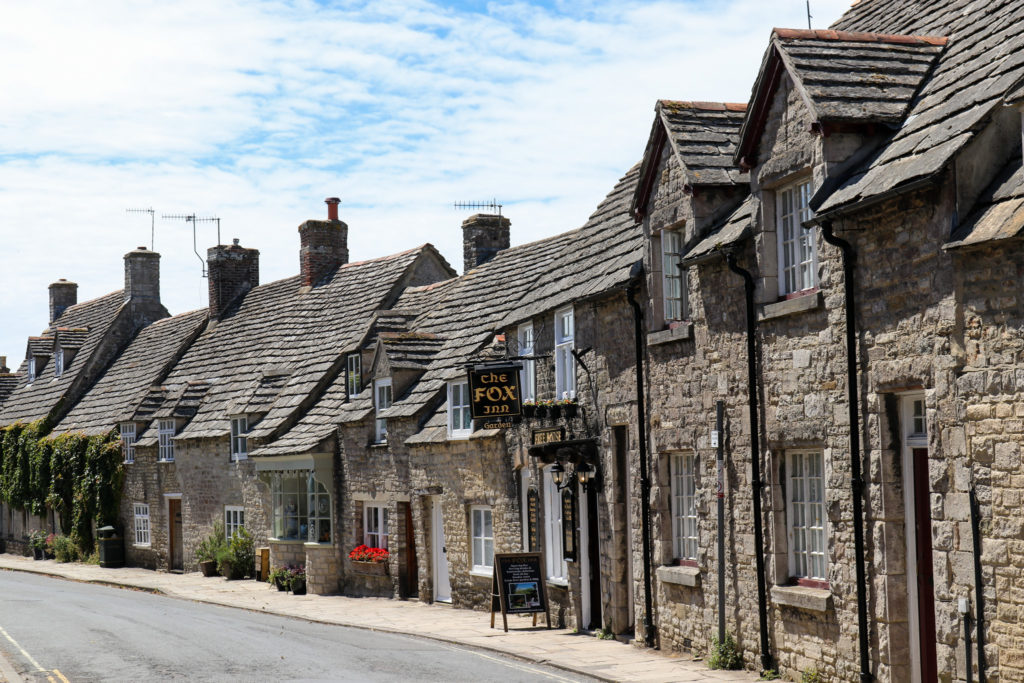
Don’t forget to check out the steam train while you’re in Corfe too – and if you want to let off some steam yourself, try the Dorset Adventure Park, just a stone’s throw from the village.
How to get to Corfe Castle
For your SatNav: BH20 5DR
Corfe Castle is situated on the A351 between Wareham and Swanage.
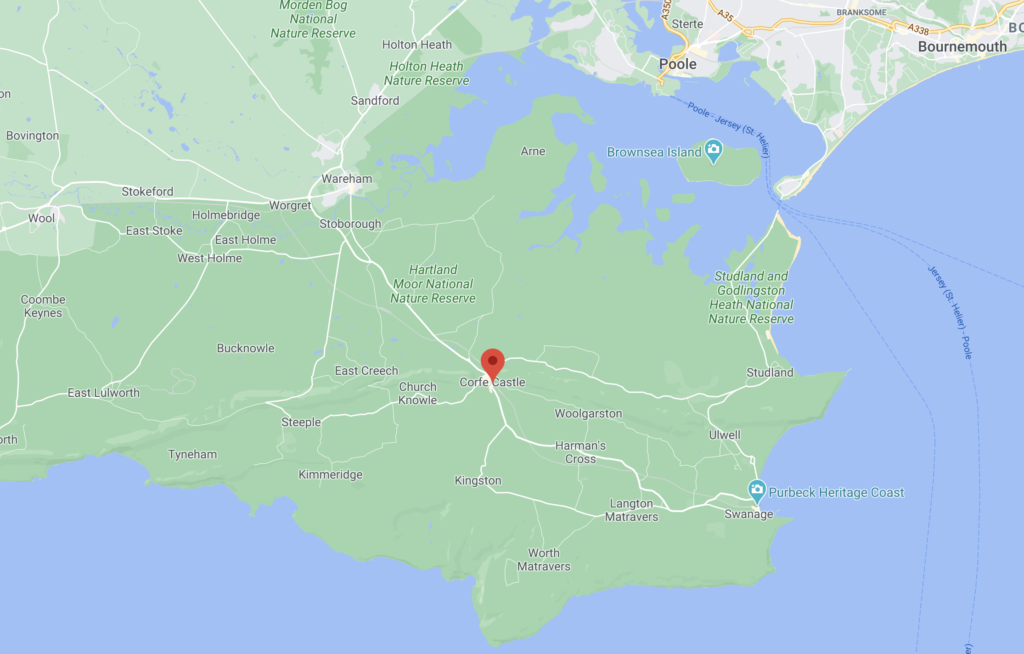
By bus
The number 40 Swanage to Poole bus runs hourly each way throughout the day.
Bus stops are a few minutes’ walk from the castle.
By train
Take the Swanage Railway to Corfe Castle for a day out without driving. Corfe Castle railway station is just a couple of minutes’ walk from the village square and castle.
If you’re coming from further afield, South West trains stop at Wareham, where you can pick up the No. 40 bus or a taxi.
Parking
For your SatNav: BH20 5DR
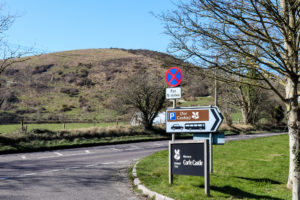
The National Trust car park is the nearest for the castle (free for National Trust members), which you’ll find on your left as you approach the castle from Wareham, or to your right just past the castle if you’re coming from Swanage or Studland.
There is also a visitor centre here, which will help you make the most of your day exploring Corfe Castle and its pretty village.
There is also a pay and display car park off West Street, located at Holland’s Close: BH20 5HH
The history of Corfe Castle
Corfe Castle has been through it all – sieges, murderous plots, family betrayal and even supposed miracles, before being blown up in 1646 by Oliver Cromwell’s Parliamentarians.
But it’s still standing, albeit looking somewhat different to its glory days.
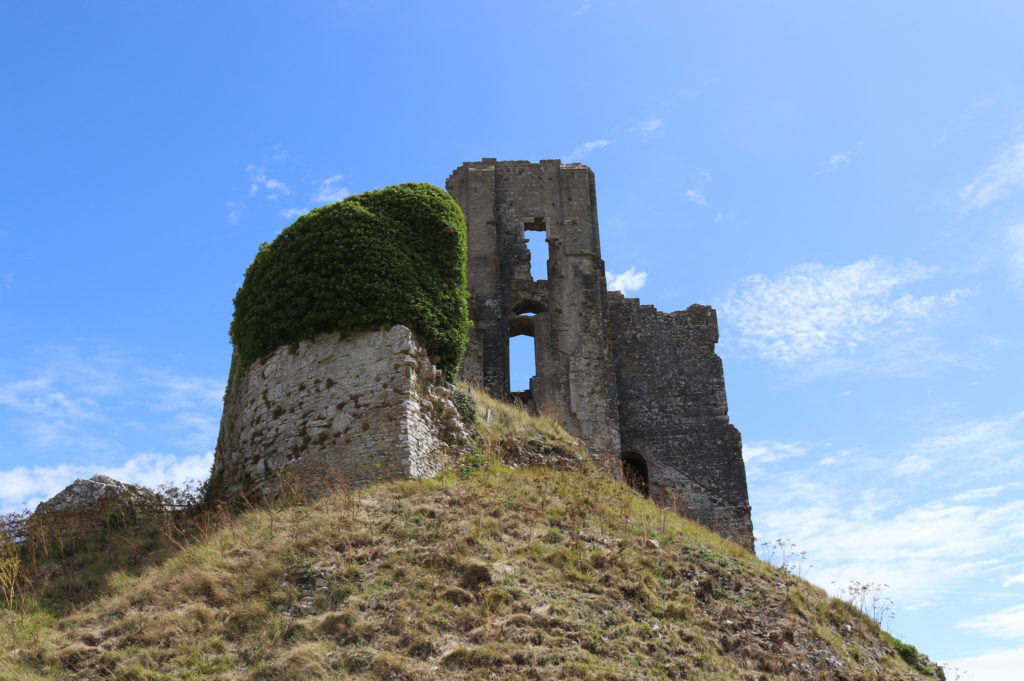
Here are some of the stories that make this jewel in the Isle of Purbeck’s crown so special.
Corfe Castle’s turbulent timeline
AD 876 – The Saxons and the Vikings battle it out
The Danes invade the Kingdom of Wessex and take control of Wareham town – ignoring a peace treaty struck by King Alfred.
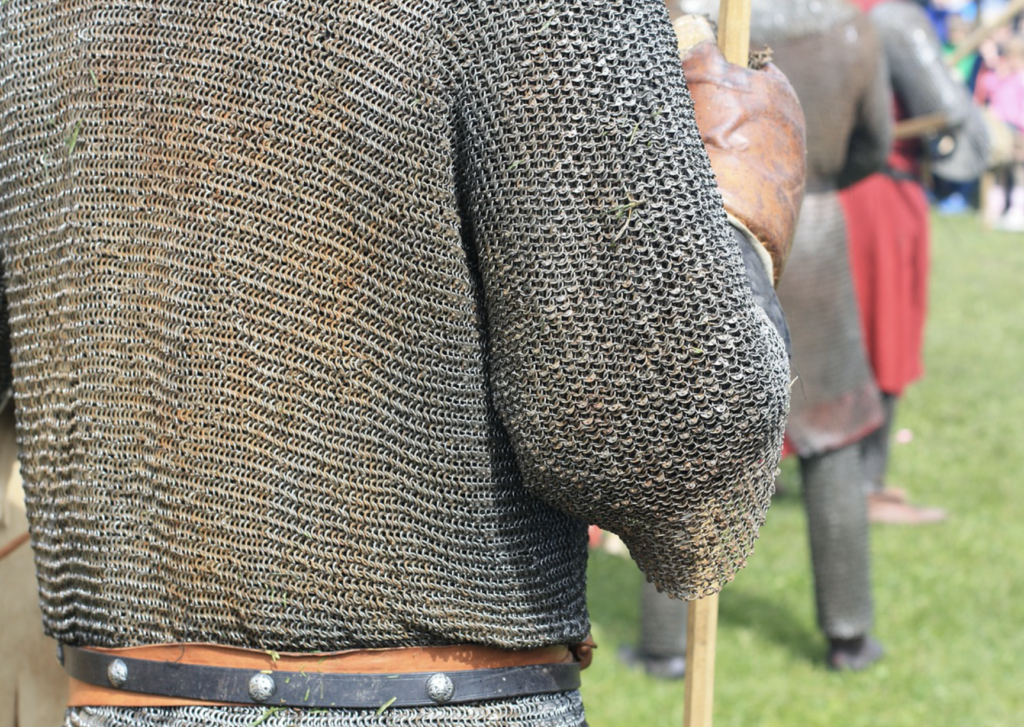
Alfred drives the Vikings back to the sea at Swanage. Some say the 120 Danish ships were destroyed in a fierce storm off the coast at Peveril Point, their entire crews perishing – but the favoured legend says that Alfred defeated them in battle.
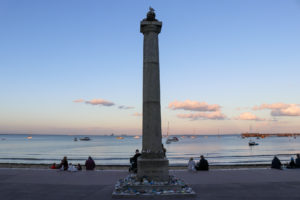
You’ll find a memorial to King Alfred on Shore Road in Swanage that reads: ‘In commemoration of a great naval battle fought with the Danes in Swanage Bay AD 877’.
Whether storm or sea battle, we do know that Alfred then re-negotiates the peace deal with the Viking king and later becomes known as Alfred the Great.
Alfred also builds a fortification at ‘Corfe’s Gate’ to prevent further attack.
Re-enactments of the Siege of Wareham are performed in the castle grounds at special events throughout the year. Here’s a snippet of what to expect:
These events allow you to take part in Saxon ‘living history’ and experience what life was like in this difficult period of history for England – when only Wessex remained free from Viking control.
AD 978 – A murder, a miracle, and Corfe’s most well-loved character: Edward the Martyr
King Edgar (great-grandson of Alfred the Great) extends Corfe Castle before his untimely death, leaving a 15-year-old Edward the throne.
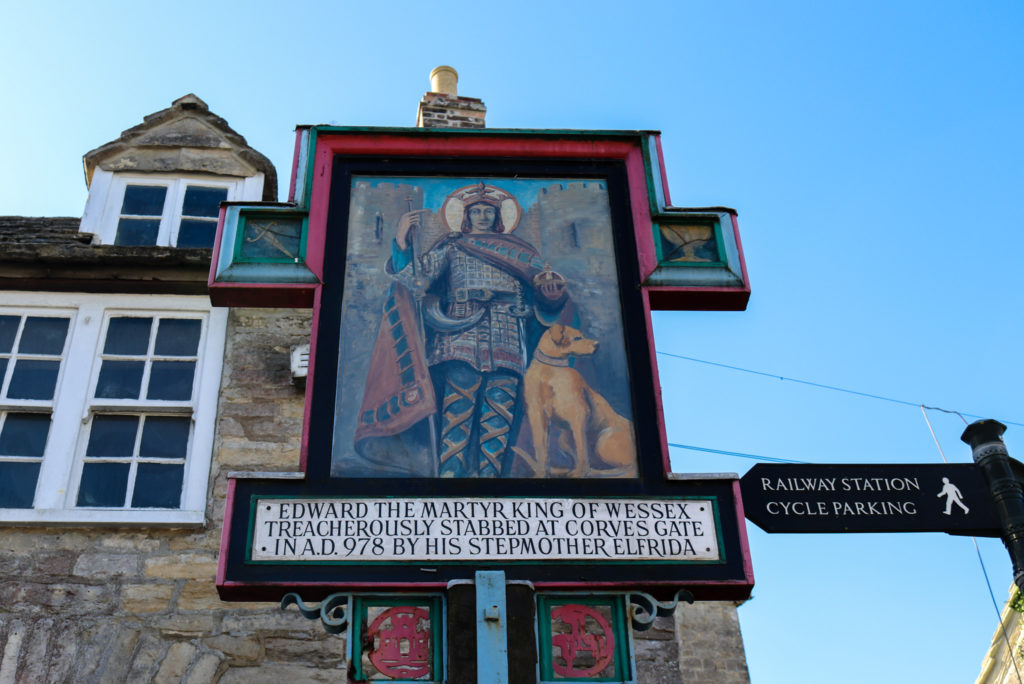
But – it’s said – Edward’s stepmother Elfryda wants his younger half-brother Ethelred to be King and so plots Edward’s murder.
Elfryda hides Edward’s body in a hut in the village, but it is soon discovered by a blind woman.
Some versions of the story say that the hut is filled with a celestial light and the blind woman can see again – and that this is the site upon which the church of St Edward in Corfe is built.
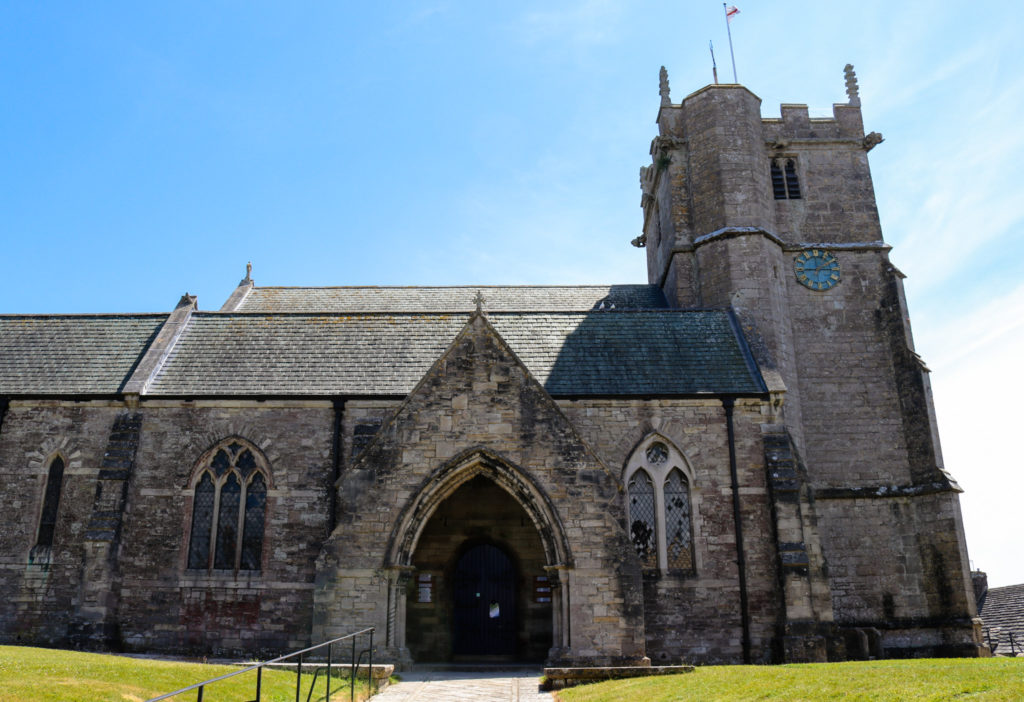
Edward’s body is then moved and re-buried in Wareham with little ceremony, but his remains are later declared sacred after they are found to have been immaculately preserved, as if by a miracle.
Edward is then canonised by the Pope and becomes a saint. His Feast day is 18 March.
Meanwhile, the much less popular Ethelred fails to stop the Danes’ continuing attempts to ravage Purbeck. He becomes widely known as Ethelred the Unready.
12th Century – Civil war, a second castle, and a royal loo
William the Conqueror upgrades Corfe Castle for his son Henry I. The Norman hall and keep are built using local Purbeck stone.
Henry I continues to fortify the structure with new ramparts and earthworks, allowing it to stand firm during The Anarchy. During this period of bad civil strife a second ‘siege castle’ is built nearby to Corfe Castle by King Stephen. The remains of this ‘motte and bailey’ castle are known as The Rings.
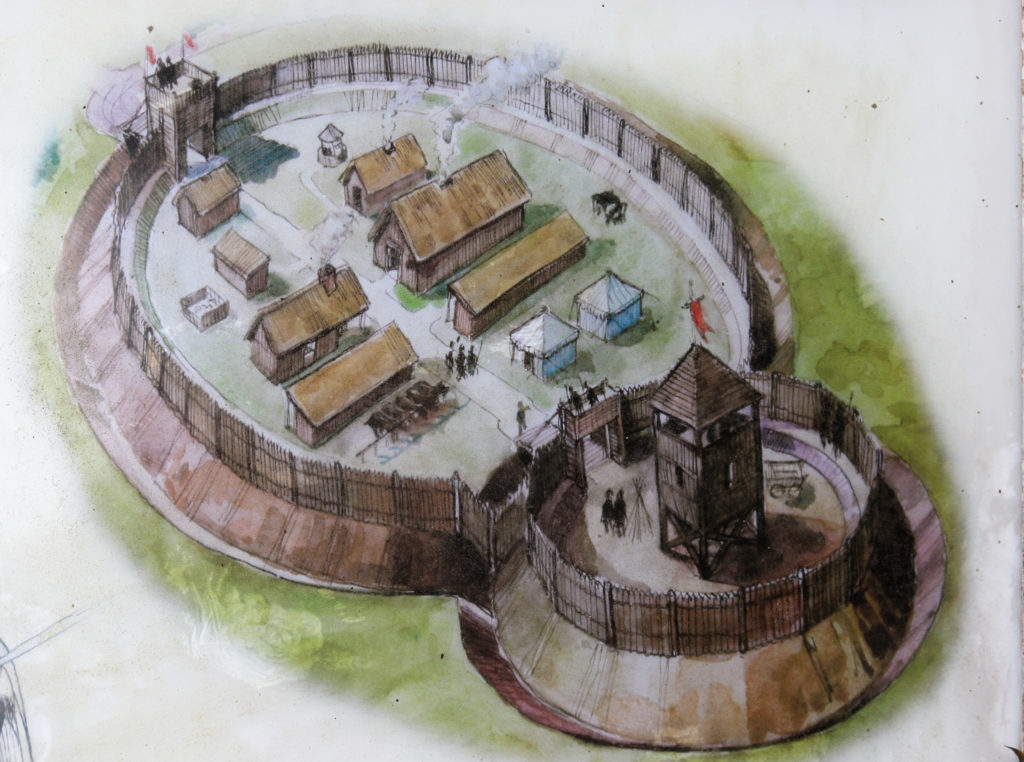
The gloriette is later built by King John. John enjoys the finer things in life, and – very decadently for the time – has a personal indoor toilet installed.
However, King John also uses Corfe Castle as a prison and becomes an unpopular king. He is forced to sign the Magna Carta, which limits his powers.
John’s son, Henry III, spends a huge £10,000 on further improvements, which are then completed by his son Edward I.
Edward extends the keep and builds the main gatehouse.
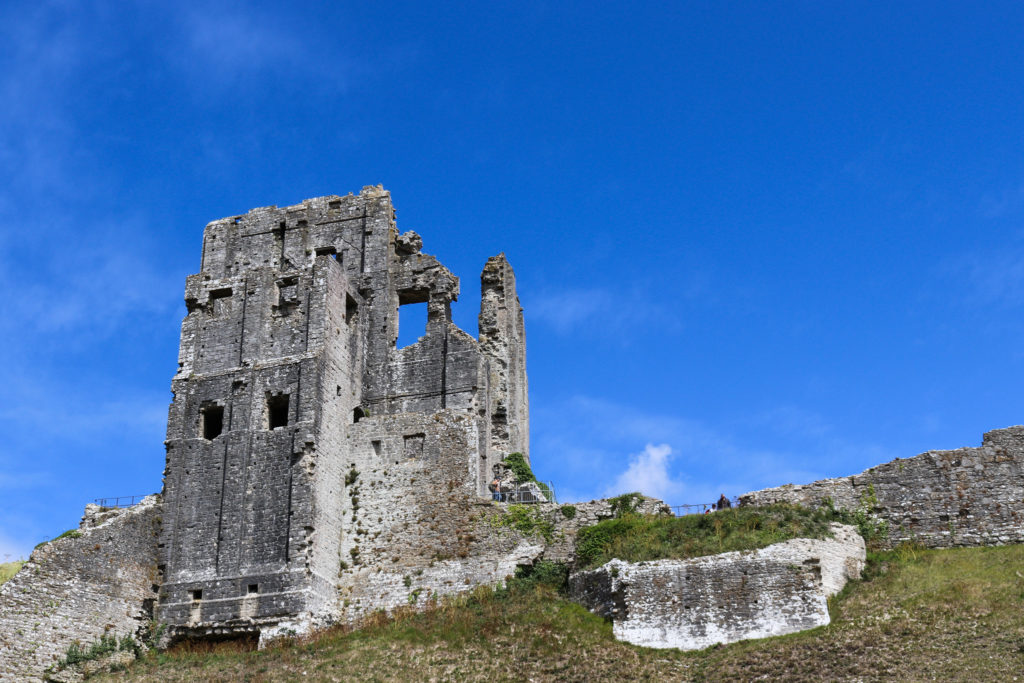
16th Century – Private ownership and piracy in the New World
In 1572 Queen Elizabeth I sells Corfe Castle to its first ever private owner, Sir Christopher Hatton – Lord Chancellor and Queen’s favourite.
Hatton is, by all accounts, wealthy, dashing, and a skilled dancer. He uses Corfe Castle to entertain society’s elite in luxury.
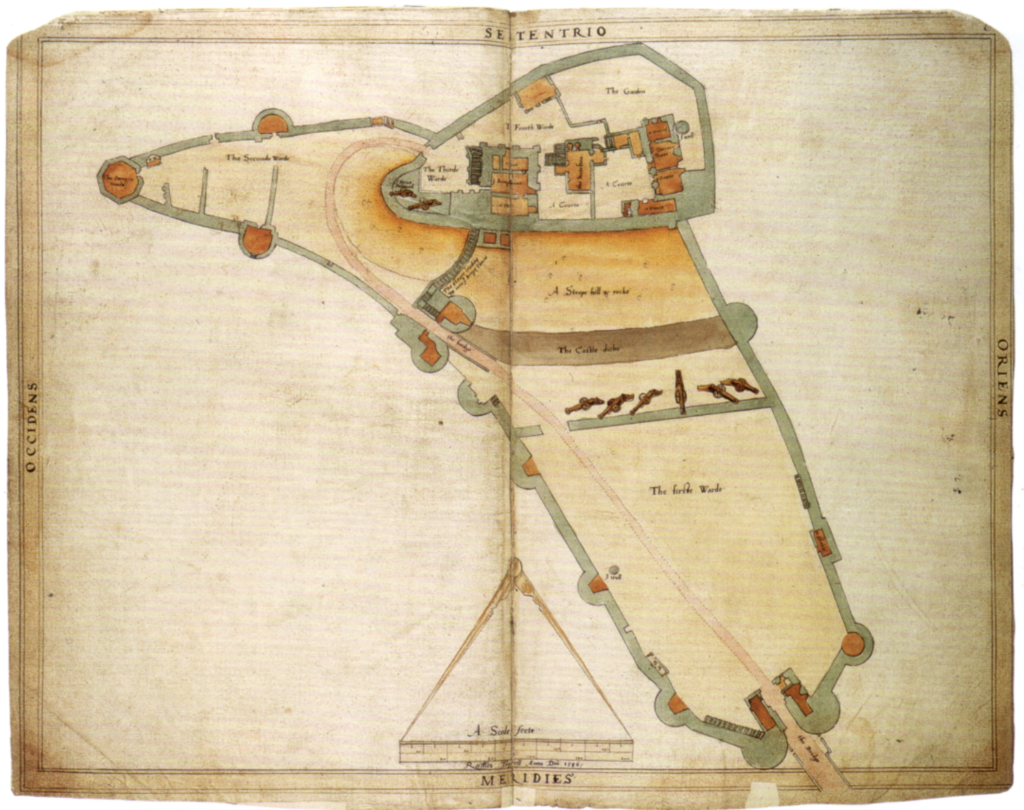
Hatton is also known as the Admiral of the Purbeck Fleet – a badge that earns him the right to defend the country with warships and capture enemy vessels as prizes.
He becomes a key investor in Sir Francis Drake’s famous circumnavigation of the world.
Drake even renames his ship to The Golden Hind, after Hatton’s coat of arms.
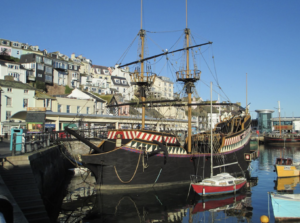
17th Century – Corfe Castle survives two sieges before a traitor spells its ultimate demise
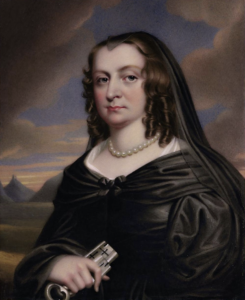
In 1643 Royalist Lady Mary Bankes defends Corfe Castle against two sieges by the Parliamentarians while her husband is away serving the king during the Civil War. It’s said that Lady Bankes, her maids and her skeleton garrison man the canons, causing the Roundheads to retreat.
But they later return in their hundreds, setting up base at the nearby old fortification The Rings. The siege lasts for several weeks, but Lady Bankes holds firm. She and her reinforcements drive the Parliamentarians away, killing 100 of them in the process.
Her bravery becomes known far and wide and her husband joins her to celebrate before falling ill and dying soon after.
However, Lady Bankes’ defiant success comes to an end thanks to a traitor. In 1646 one of her own men – a Colonel Pitman – smuggles 120 Parliamentarians into the castle, forcing it to surrender.
Corfe Castle is then ordered to be blown up by an Act of Parliament.
But Lady Bankes doesn’t give up on her estate and campaigns to get back what is rightfully hers. Years later, in recognition of her bravery and sheer determination, the Parliamentarians hand her back the keys to Corfe Castle.
1982 – A generous gift – Corfe Castle becomes something the public can enjoy
Ralph Bankes gifts Corfe Castle, Kingston Lacy and much of his estate in Purbeck, including Studland Bay, to the National Trust when he dies.
It is the largest gift of its kind to the Trust ever made.
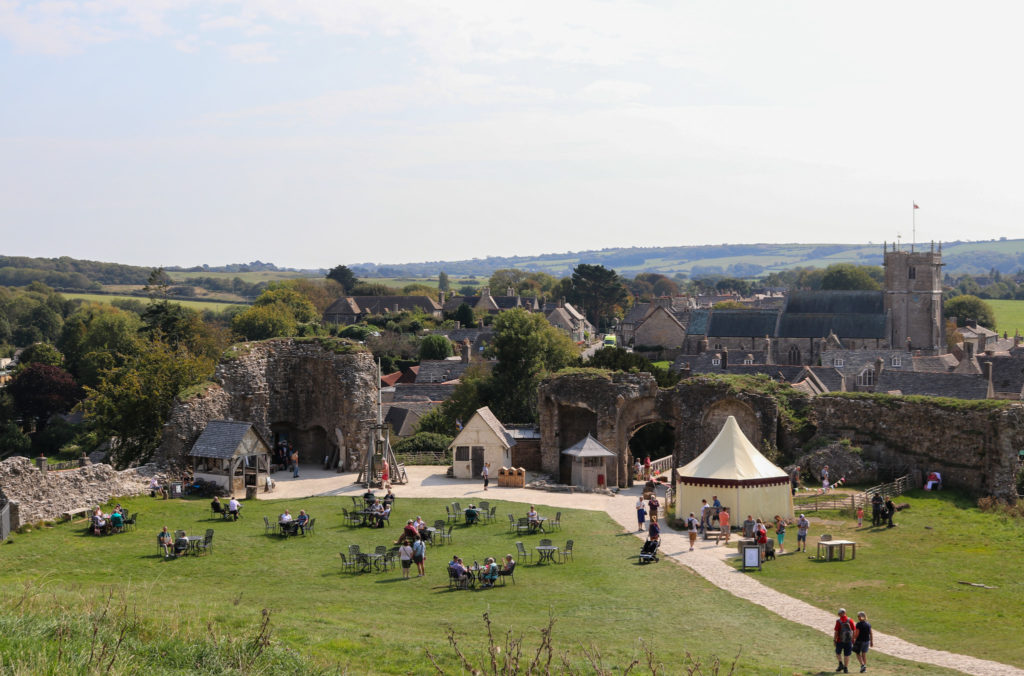
Corfe Castle in film and literature
Children’s writer Enid Blyton was struck by the beauty of the Isle of Purbeck and took inspiration from various places here in her writing, including Corfe Castle – which she reimagined as Kirrin Castle on her Kirrin Island.
Corfe was used in 1957 as a filming location for Five on a Treasure Island and a subsequent TV series of the Famous Five adventures in 1995.
Other locations include West Street in Corfe Castle and spots on the Jurassic Coast including Durdle Door, Lulworth Cove and Stair Hole. See if you can spot them in this adaptation:
Corfe Castle also features in the 1971 Bedknobs and Broomsticks movie.
Nearby castles to continue your historic exploration of Dorset
If a day exploring Corfe Castle has whet your appetite for more towers and tales of treachery and intrigue, there are some other important sites to visit in Purbeck and further afield across the county.
Public access
- Durlston Castle, Swanage – This intriguing Victorian faux castle was commissioned by Swanage businessman George Burt in the 1800s and is part of his then estate; now Durlston Country Park
- Lulworth Castle and Park – An impressive 17th Century castle that was once a hunting lodge for the elite
- Highcliffe Castle, Christchurch – The stunning Grade I listed 19th Century Highcliffe Castle is widely regarded as one of the finest examples of Romantic & Picturesque architecture
- Christchurch Castle – A romantic ruin dating back to Norman times
- Maiden Castle, Dorchester – In fact an Iron Age hill fort settlement, Maiden Castle is one of the best and largest examples of its kind in Europe
- Sherborne Old Castle & Sherborne New Castle – Explore these castles and grounds with their connection to explorer Sir Walter Raleigh
- Sandsfoot Castle in Weymouth, and Portland Castle – These coastal forts were built by Henry VIII, both benefitting from good vantage points for keeping watch for potential invasion from the sea
Private access only (but external viewing is possible)
- Brownsea Castle on Brownsea Island – Created by Henry VIII to defend Poole Harbour from potential invasion by the French. Brownsea Castle was first privately owned in 1726 until it was bought by the National Trust, which now leases it to the John Lewis Partnership
- Rufus Castle, Portland – Also known as ‘Bow and Arrow Castle’, this 15th Century ruin is named after William II, (known as Rufus, for his red hair) who is believed to have had an earlier C11th fort here. The castle overlooks Church Ope Cove and the Shambles sandbank – a particularly treacherous section of the dangerous sea here that has seen many a shipwreck over the years
